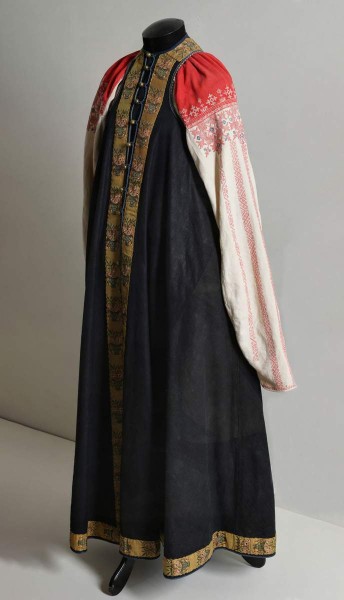Sarafan
First half of the 19th century
- Chinese cotton, silk ribbons, twenty four buttons, linen, red calico, double-faced cross stitching. 120 х 340
- Гр. Б-3298; В-801
Пост из музея ОПХ
Shirt
Flax canvas, red calico, chintz, embroidery
The sarafan (strapless), cut in an old style, was made in an Old Believer family. This type of sarafan kept its bell shape thanks to the thick linen lining which was carefully tacked on with many stitches. This type of sarafan is called glukhoi (not fastenable).
Chinese cotton is a mixture of silk and cotton, dyed in one color, which was manufactured in China and imported into Russia until the early 19th century. In the first quarter of the 19th century Russian-made cloth completely squeezed out foreign imports. The final finish and quality were attained after the final glazing stage. The shine (gloss) was added by beating the dyed cloth on an oak block with a special mallet, a tokmak. An A-line sarafan made from this cloth was thus named a kitaika (Lebedeva 1927, 51) or kitainik (Dahl Vol. 2, 280), meaning “Chinese”.

